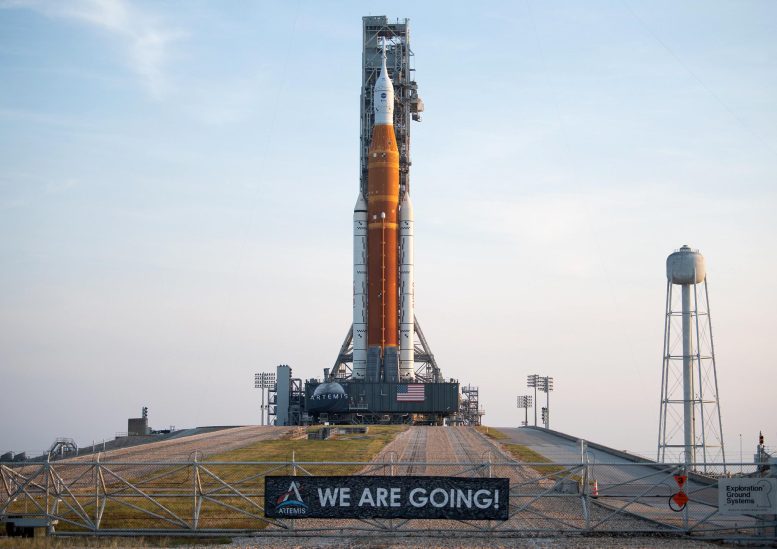
NASA’s Space Launch System (SLS) rocket with the Orion spacecraft aboard is seen atop a mobile launcher at Launch Pad 39B, Wednesday, August 17, 2022, after being rolled out to the launch pad at NASA’s Kennedy Space Center in Florida. NASA’s Artemis I mission is the first integrated test of the agency’s deep space exploration systems: the Orion spacecraft, SLS rocket, and supporting ground systems. Launch of the uncrewed flight test is targeted for no earlier than August 29. Credit: NASA/Joel Kowsky
Before our Space Launch System (SLS) rocket and Orion spacecraft can launch our nation into a new era of spaceflight, the duo must first undergo a wet dress rehearsal at the launch pad prior to liftoff.
Watch SLS and Orion continue on their path to the pad as they travel to Kennedy Space Center’s Launch Pad 39B for a full countdown rehearsal – an operation involving hundreds of engineers stationed all across the nation.
See Episode One: The Most Powerful Rocket NASA Has Ever Built.
See Episode Two: The Orion Spacecraft.
Video Transcript:
Across the nation are sacred sites that capture the spirit of America’s character and one of those places is right here. The Kennedy Space Center.
Every single vehicle that has carried humans beyond the bounds of low Earth orbit has undergone integration and testing in that vehicle assembly building, crawled down this roadway and launched right here from the Kennedy Space Center.
The Space Launch System mated with the Orion spacecraft will continue this proud tradition.
As soon as we rollout of the Vehicle Assembly Building, High Bay 3, and the world gets a chance to see this rocket, I think, I think it is going to be shocking.
On March 17th, NASA took a giant step toward returning humanity to the moon. The fully assembled Space Launch System rocket and Orion spacecraft for the Artemis I mission made its debut outside the massive Vehicle Assembly Building.
We’ve seen the mobile launcher outside, and it’s massive, but now add an over-300-foot rocket on top of it, it’s just gonna be amazing.
Charlie Blackwell-Thompson, oversees the launch countdown, ultimately providing the “go” for launch.
NTD, launch director, representing this team and all the men and women that have worked to make this day happen, I proudly give you a go to roll the Artemis launch vehicle to the pad.
Ladies and gentlemen, the world’s most powerful rocket right here.
Once outside, the rocket began its nearly four-mile journey to the pad, riding atop a 6.6-million-pound crawler-transporter, which was originally constructed to transport the Apollo Moon rocket.
In one year, we have completely stacked the vehicle, we have completed most of our testing, all very successful, and we are so close to launch. The excitement is just crazy.
Now NASA’s new Moon rocket is making the same journey the Saturn V took 50 years ago.
And just as all eyes are on the SLS tonight as it makes its journey. In a few short weeks, all eyes are going to be on the sky as it rocks the Space coast and takes its maiden flight around the Moon.
It is amazing to see the culmination of all of this work of many years from many industries of many people that have come and go to have a chance to then now see their work going over to the pad and then launching to go to the Moon.
The rocket is rolling to historic launch complex 39B – its launch pad used for both Apollo and shuttle launches, sending hundreds of astronauts to space throughout the decades and now on tap to send hundreds more as we return to the Moon and venture beyond to Mars.
But for this mission, there will be no astronauts on board.
Before the uncrewed Artemis I stack can launch to our nearest celestial body, it has to travel to the pad for a wet dress rehearsal – a test run of rocket, capsule, launch team and launch pad through their paces simulating a launch countdown.
When we get to the pad, the pad team will be connecting all the interfaces between the pad and mobile launcher so that we can go ahead and start our operations at the pad. So at that point the launch director really takes over and she will go down the sequence as if it was really a normal launch day.
Wet dress rehearsal is essentially launch without a launch. It is really the reason we’re doing it is to verify and validate all of the pieces that go into launch countdown.
So wet dress is really our opportunity to find any issues or adjustments that we need to make in our launch countdown.
For Artemis I, the wet dress rehearsal is the final and most critical test before the rocket can return to the launch pad for liftoff to the Moon. During the countdown, over 730,000 gallons of super-cooled liquid propellants will be loaded into the rocket as part of the nearly two-day launch countdown.
We will configure all of the ground systems exactly the way we would for launch, and we will fully load the core stage and the interim cryo propulsion stage with their liquid fuels.
That’ll be the first time that that’s been done from here at Kennedy Space Center. There have been pieces of these things done in multiple different areas. We’ve tested all of these systems in multiple different locations, but this will be the first time where we pull it all together and do all of it all in the same progression that we’ve got laid out for launch countdown.
Wet dress is the biggest milestone we have aside from launch because that means that the rocket is now put together, has been tested separately and together and it is ready to go and be filled with fuel to simulate how we’re gonna to do it at the pad and then it tells us the rocket is ready to go for launch.
And, behind that wet dress rehearsal is a launch team made up of hundreds of engineers monitoring each system of the 320-foot-tall Artemis I rocket and capsule.
Sitting in firing room 1 is the core launch control team, monitoring hundreds of launch commit criteria to ensure the ground systems and flight hardware are ready for launch.
Now you would think that launch control team in firing room 1 is it, that’s all you need. We have an expansive support team across really the entire NASA enterprise that is supporting us on launch day.
And that support spans the entire nation, from additional system engineers sitting in Kennedy’s Firing Room 2, to the flight control team at Johnson Space Center in Houston, to the contractors responsible for designing and building each segment of the rocket and capsule.
This team is really shaping up to be a great, very skilled and ready to operate and execute launch for Artemis I.
With the Artemis I launch team now fully certified, and the wet dress rehearsal complete, SLS and Orion are ready for their final pitstop: returning to the VAB before venturing back to Launch Pad 39B for liftoff.
I mean we are going, and we are going together, and we are having an opportunity to do this in a new generation of space exploration in which I can say that I’m really a part of.
You know, you come every day to the VAB and you see the rocket and you can’t believe what we have accomplished.
People throughout history have always explored and you never know what you’re going to learn.
Exploration is not always about the destination, but it’s the path that you travel, the things you learn along the way.
And the things we’re going to learn are going to be incredible. We can’t even begin to understand what those are today.
Our workforce has been a relentless spirit. We imagine, we build, we never stop pushing the envelope of what is possible.


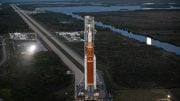
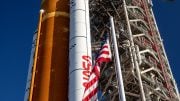
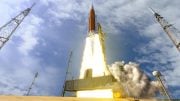
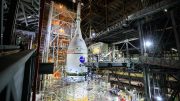

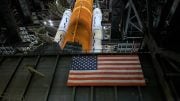
Be the first to comment on "NASA Artemis I Path to the Pad: Roll to the Pad"